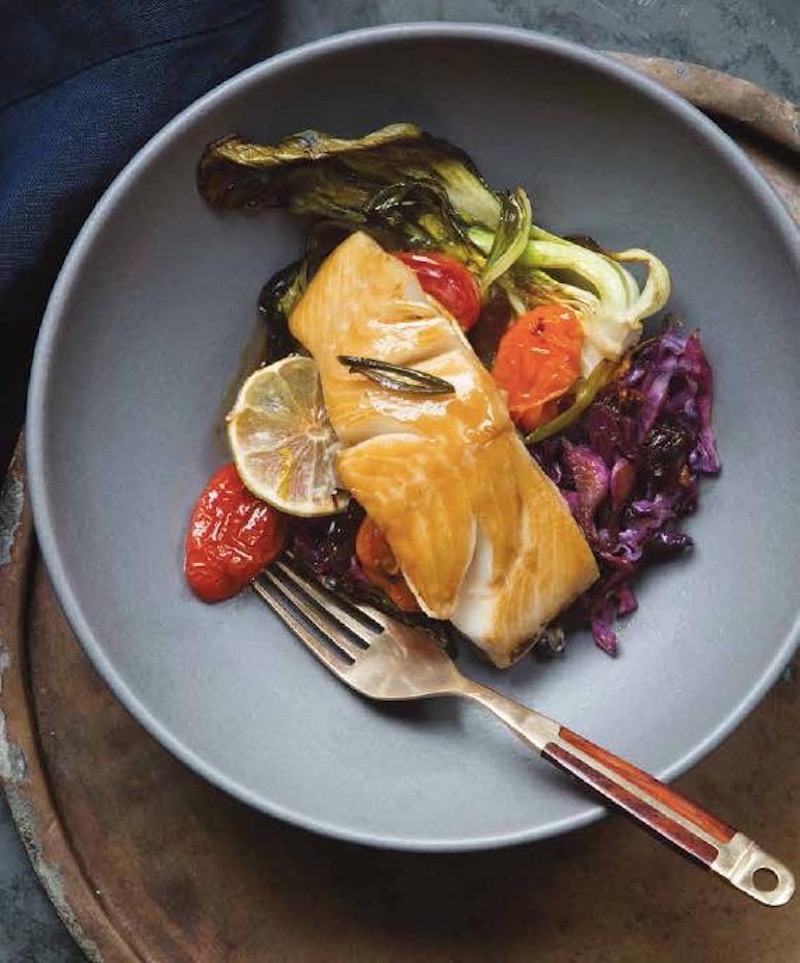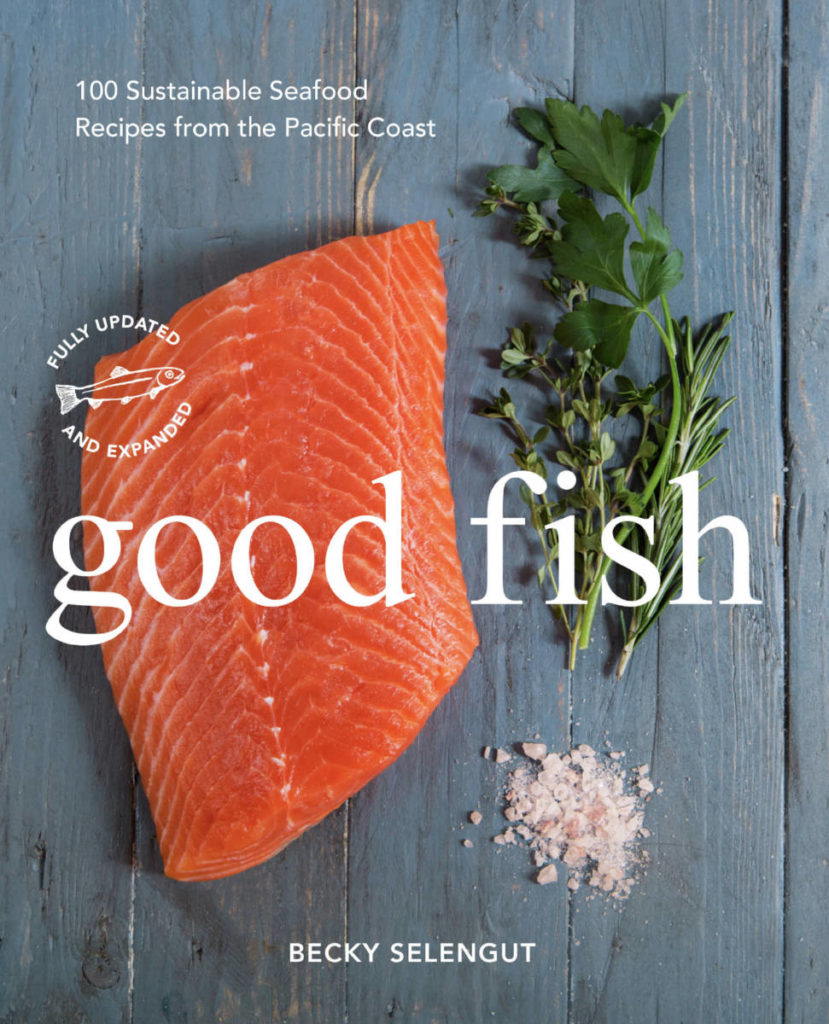Seattle chef Becky Selengut forages, podcasts, teaches, and cooks for clients on yachts. In between, she manages to find the time to write books, including Good Fish, Shroom (about mushrooms for eating, not their psychedelic cousins), and most recently, How to Taste, her “deep dive into salt, acid, bitter, sweet, fat, umami, bite (heat), aromatics, and texture."
Every meal should offer at least a hint of each of these taste experiences, she says.
Could home cooks create and even appreciate such a meal? In short, can you teach a person how to add the finer nuances of taste?
Her answer, a resounding "Yes!"
Selengut's classes, podcasts, and books teach us how to become masters of taste, identifying flavors, building flavors, balancing flavors, and even fixing flavors in a dish that has gone wrong.
Respecting Seafood's Subtle Notes

When it comes to seafood, Selengut says, balancing flavors subtly adds a fine chef's touch. She really likes salt, for example.
“A properly salted dish won't be salty," she writes, “it will taste more of itself. A carrot soup will taste more carroty: sweeter, more nuanced," and the same applies to seafood of all kinds.
Next in seafood flavor-balancing is acidity, which, Selengut writes, “energizes food and wakes you up, slapping you out of a culinary deep sleep." This is why we eat pickled ginger between bites of sashimi or sushi and squeeze lemons on fried fish (or, in landlubber fare, put cranberry sauce on turkey and ketchup on fries).
Pro tip: Not every dish needs acidity, but every meal must include some, and seafood often benefits from an acidic zing.
That's why her recipe Salmon with Miso Vinaigrette and Sesame-Roasted Vegetables in How to Taste has a double dose of acid: full-fat Greek yogurt and sauerkraut made from green cabbage. Together, they balance out the rich salmon.
A properly salted dish won't be salty. It will taste more of itself.
Becky Selengut
Another vital seafood-complementing flavor: umami, a Japanese term that means, roughly, "savory." Chemically, umami foods are rich in an amino acid called glutamate. Selengut explains how anchovies, seaweed, and shellfish all make dishes taste richer with their boost of umami flavor.
Taste in the Balance
Vital Choice's Temma Ehrenfeld asked Selengut to walk us through the flavor balance of some of her favorite seafood recipes.
VC: A lot of people have someone who wants to eat meat for every meal. Let's say you've got your steak guy, and he's agreed to try seafood. What's your best bet to feed him from an umami point of view?
Selengut: A classic, high-umami shellfish dish would be a pasta puttanesca with shellfish. It has olives, capers, anchovy, the chili flavor, and tomato sauce, and then you just throw smoked mussels in there.
Take half of one little anchovy that you get in a jar and melt it into olive oil and start your onions. It's almost like adding MSG to your food. It just gives it a huge, rich, meaty, flavorful base.
VC: That's a good reason to always have anchovies in the house.
Selengut: Yes, my wife is a pretty picky eater, so I hide all kinds of things by using small amounts and then adding other flavors so she doesn't know it's there. Anchovy will bring out a lot of that savory quality that meat eaters might miss in fish.

VC: What else could you put in the puttanesca for umami lovers?
Selengut: I would do shrimp, mussels, and clams — they would all be great.
VC: I love mussels. What else could you do with fresh ones?
Selengut: For home cooks who want dinner on the table quickly, I'd suggest mussels with tomato-Espelette butter. Espelette is a pepper, but you can substitute other interesting peppers or just use cayenne pepper.
VC: Can you walk us through the flavors in that combination?
Selengut: The shellfish provides some of that umami we're talking about, and the smokiness from the peppers gives an extra dimension. The tomato paste is rich in natural glutamates. Garlic gives it aromatic qualities, as does the parsley you finish it with — it's not there just for the color but also the aroma.
And then for texture, serve it with a loaf of crusty bread, which is, I think, super important — otherwise you just have a bunch of soft textures. (Most humans, unless you've had your jaw wired shut, don't want just smooth.) You want crusty bread to dip into the sauce.
VC: Would you put sugar in because you're using tomato paste?
Selengut: No, the shellfish itself has a little bit of sweetness, so I wouldn't recommend that.
Savoring Salt
VC: Why do you recommend unsalted butter if salt is so important?
Selengut: I use unsalted butter for all my recipes because you don't have the flexibility to add salty ingredients if you're using salted butter. Shellfish can be salty. You can always add salt.
VC: I almost never use salt, and I now realize, after reading your books, that I'm totally wrong.
Selengut: I wouldn't call it wrong. I don't think people should start piling on the salt, but it certainly will add much more interest.

I like to start a recipe with a little bit of salt and then build it as I go, keeping in mind which ingredients are already inherently salty. So, with kalamata olives and capers, you hold off fully salting something until you add those things, and then I always tell people to taste. Take a bite that has a salty thing in it so you can adjust. You can always add salt, but it's hard to take it away once you've gone too far.
VC: Do you have a favorite recipe for sardines?
Selengut: Sardines are high in omega-3 fatty acids, which are really good for you. But they tend to bring that “fishy" taste that a lot of people don't like. I like my recipe Dad's Sardines on Crackers with Caramelized Onions (below), which neutralizes the fishy taste by balancing it with a couple of ingredients.
You get the Zante currants, which are actually dried grapes, and they give you sweetness that balances some of the fishiness. And then you soak the currants in gin, which adds a juniper, herbal kind of flavor note and makes the sardines taste a little bit more like tuna, which a lot of people tolerate.
Honor the Onion
You also have caramelized red onion, which is pretty for the color but adds sweetness too. And then you have Dijon mustard on a cracker, which gives the dish a salty, peppery bite. You have parsley for an herbal, aromatic. And then you have, of course, the natural fat and umami that are in the sardines, and the extra virgin olive oil adds even more fat. So, you get this great balance of all these different things.
VC: I saw that you say caramelizing onions takes 45 minutes!
Selengut: You can make a big batch of them and then just freeze them in little baggies and put them into a bigger container. Then just pop out a little ball of caramelized onions, pop it in your pan, and you're ready to go for a lot of recipes.
[You can see Becky caramelizing onions here. Caramelizing need not always take 45 minutes; the recipe below specifies 15 to 20 minutes.]
Dad's sardines on crackers with caramelized onions
SERVES 6 TO 8 AS AN APPETIZER
1 (4-ounce) tin sardines in extra-virgin olive oil
1 tablespoon dried Zante currants
1 tablespoon gin
1/2 cup small-diced red onion
1/4 teaspoon fine sea salt
1 tablespoon extra-virgin olive oil
Freshly ground black pepper
Dijon mustard, for spreading on crackers
2 tablespoons finely chopped fresh Italian parsley
WINE PAIRING: First choice is Vermentino; second, rosé. Remove the sardines from the tin, discarding the oil, and place them in a bowl. Get the currants drunk by floating them in the gin. In a small sauté pan over medium-high heat, caramelize the onions by cooking them, along with the salt, in the oil. Keep cooking them until they get very soft and light brown. If they get too dry, add some water to prevent them from burning. It should take 15 to 20 minutes for the onions to get good and sweet.
OK, you're in the home stretch now — just mash up those sardines with a fork, add the drunk currants and the caramelized onions, and season generously with pepper. Eat the sardines on crackers with Dijon mustard and parsley. If you're cool, you'll eat them for breakfast, like my dad did.
Reprinted with permission.



